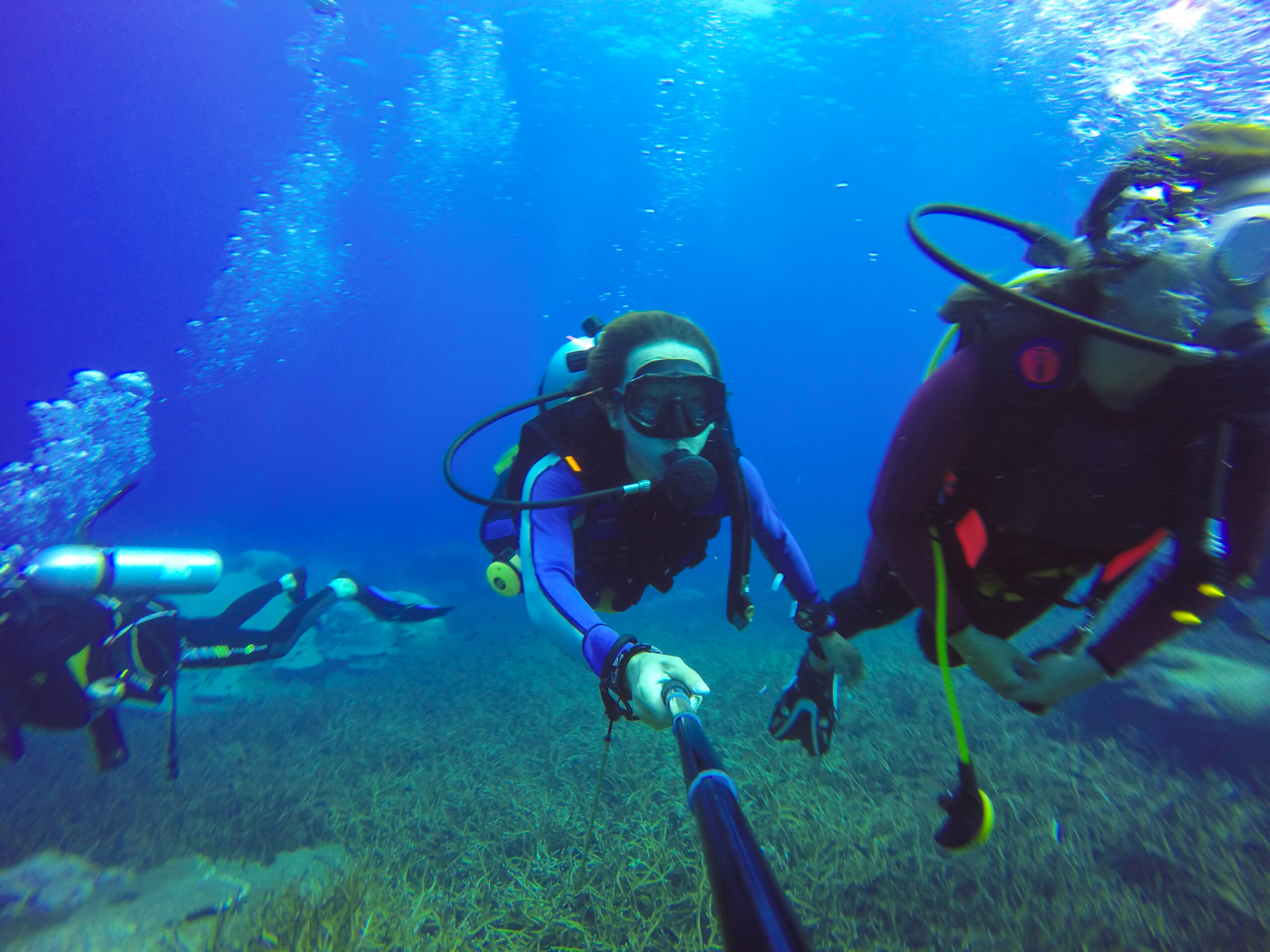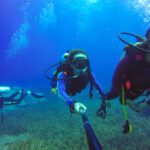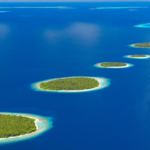Tucked away in the heart of the Indian Ocean, the Maldives is a mesmerizing concoction of sugar-white beaches, crystal-clear turquoise waters, and an astonishing underwater world brimming with vibrant marine life. This tropical paradise is every sun-seeker’s dream destination. Yet, the real beauty of the Maldives lies beneath the waves, waiting to be explored by those daring to plunge into its depths. So, why dive in Maldives? Let’s plunge into the depths of this question and resurface with an array of compelling reasons.
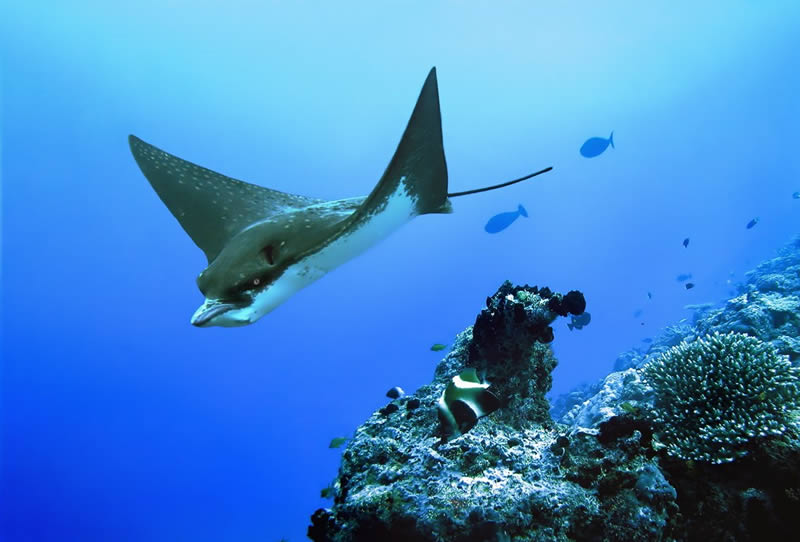
1. Geographical Advantage
The Unique Archipelago
Sprawling across roughly 90,000 square kilometers in the Indian Ocean, the Maldives is an archipelago of 26 atolls made up of over a thousand coral islands. This unique geography provides a multitude of dive sites, each boasting its own charm and set of surprises. No two dives in the Maldives are the same, with each island and atoll offering a distinctive adventure. Whether it’s the lively fish traffic at Kuredu Express, the enchanting caves at Kandooma Thila, or the iconic hammerhead point at Rasdhoo Atoll, the Maldives has a dive spot for every taste and experience level.
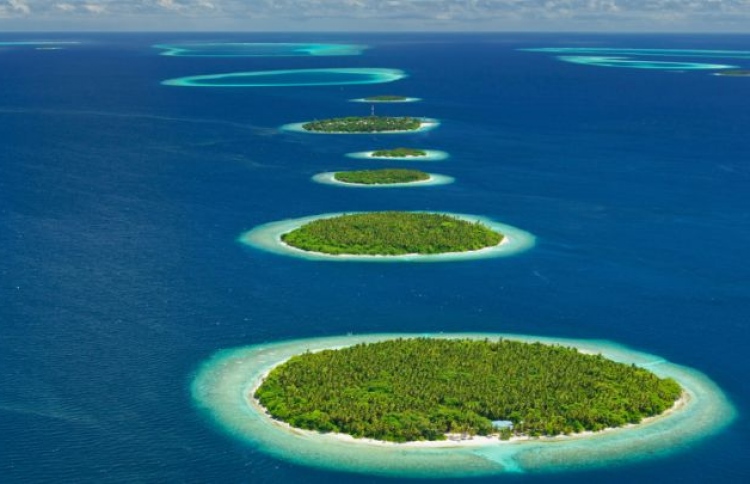
The Rich and Varied Marine Life
With over 2,000 species of fish, 200 species of coral, five species of sea turtles, an array of sharks, rays, and marine mammals, the Maldives takes the crown for hosting one of the richest marine ecosystems in the world. Here, schools of vibrant reef fish glide past stunning coral formations, while more elusive creatures like sharks, rays, and turtles make regular appearances. As divers, we have the opportunity to step into this underwater universe and observe its inhabitants up close – an experience as educational as it is thrilling.
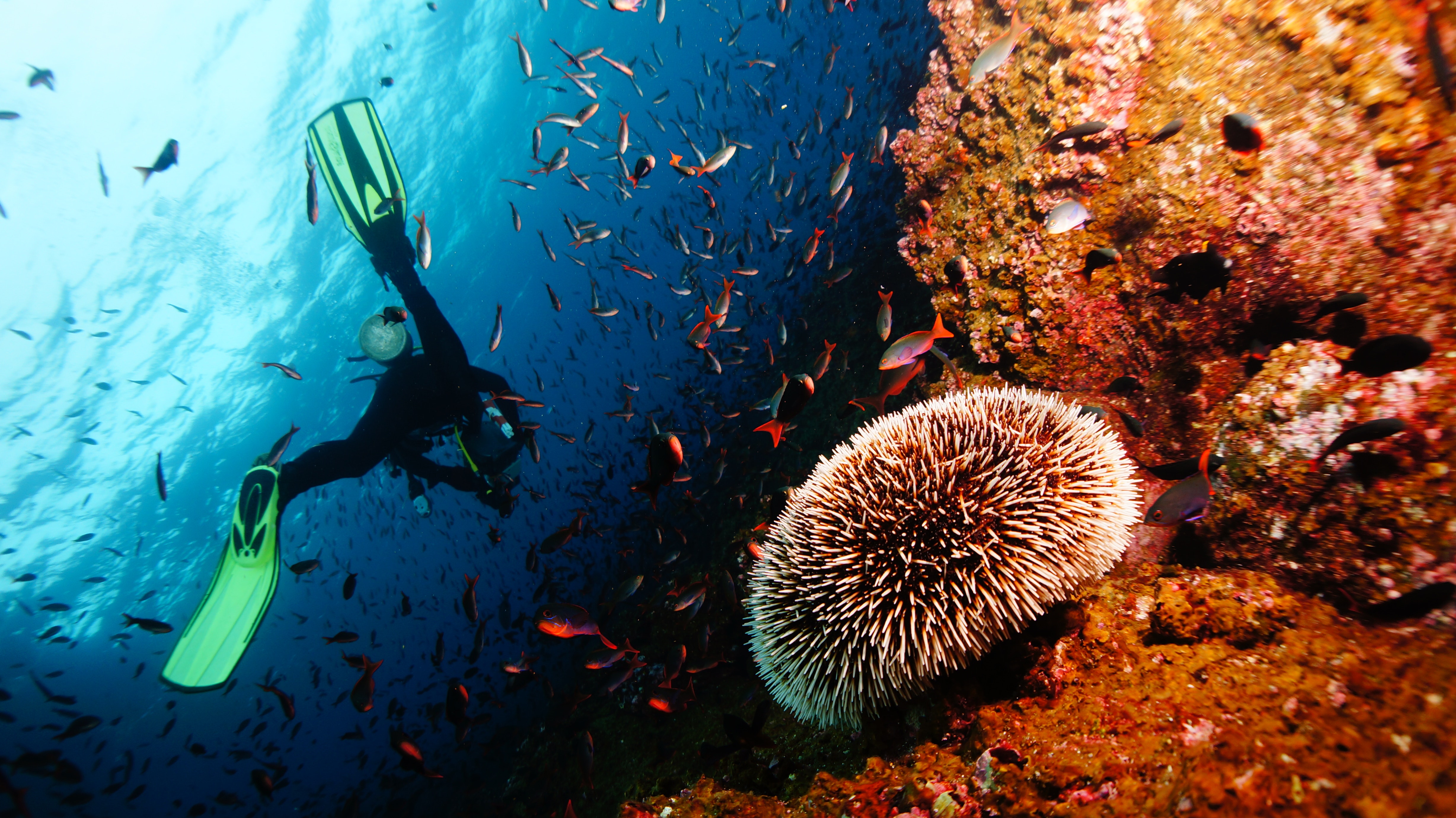
2. Ideal Conditions for Diving
Clear Visibility and Warm Waters
When it comes to the prerequisites for a great dive, the Maldives ticks all the boxes. The waters around the islands boast exceptional clarity, with visibility often exceeding 30 meters, allowing divers to fully appreciate the mesmerizing underwater landscapes and marine life. Furthermore, the water temperature in the Maldives averages a comfortable 29°C throughout the year, making it pleasant for prolonged dives and maximizing underwater exploration.
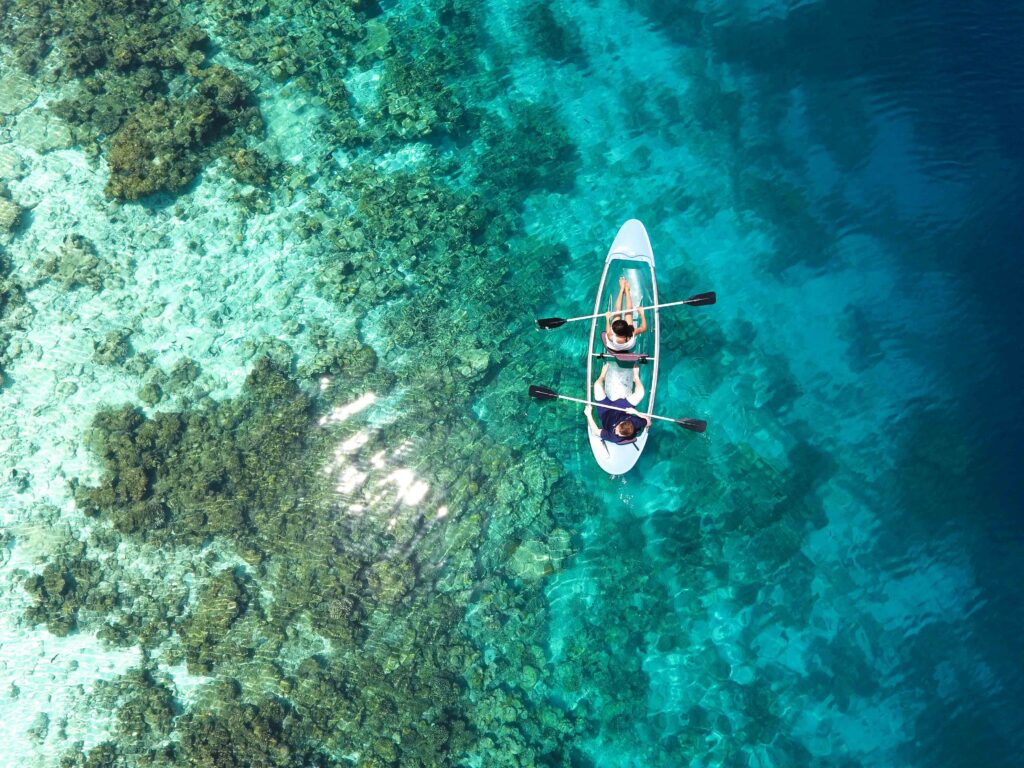
The Diversity of Dive Sites
The Maldives is a diver’s playground, with over 200 recognized dive sites and many more yet to be discovered. There’s a site for every diver, regardless of their skill level. Beginners can ease into the experience in the safe and shallow lagoons, while advanced divers can get their adrenaline pumping in the challenging drift dives and deep channels. Moreover, the Maldives also offers unique experiences like night diving and wreck diving, enticing divers to experience the underwater world from a whole new perspective.
Why Dive In Maldives: Maaya Thila in Focus
Maaya Thila, the ocean’s hidden gem. Enveloped in the warm embrace of the Maldives, this marine wonderland is a protected oasis teeming with vibrant life and mesmerizing topography. From the swirling currents that dance around the Thila, to the breathtaking aquatic creatures that call it home, Maaya Thila is a diver’s dream come true.
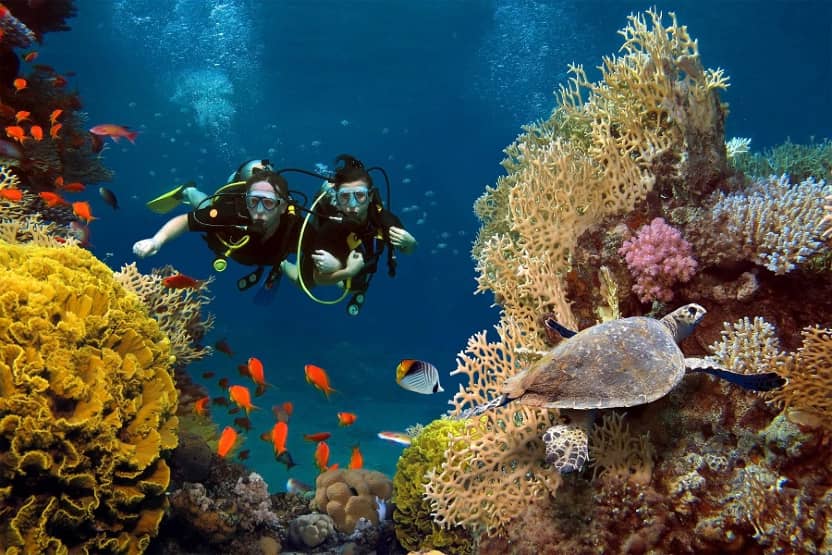
As you descend into the depths of the azure waters, the majestic pinnacle of Maaya Thila emerges from the ocean floor like a submerged mountain, reaching up to 6 meters below the surface. The reef edge cascades down from 12 meters to the abyssal depths of 30 meters, cradling a treasure trove of marine life in its intricate folds.
Navigating the circumference of the Thila is akin to embarking on a thrilling underwater odyssey. The strong currents that surge through the marine reserve demand skill and courage, but the rewards are bountiful. These nutrient-rich waters lure a kaleidoscope of creatures, from the graceful turtles and enigmatic frogfish to the stealthy stingrays and elegant whitetip reef sharks.
The north side’s cavernous expanse is a haven for fish of all shapes and sizes. White tips, dog-toothed tuna, and great barracuda swim alongside the ethereal blue-faced angelfish and the venomous lionfish, creating a symphony of life in this underwater realm. With every kick of your fins, you are immersed in a world that is equal parts breathtaking and humbling.
As the sun dips below the horizon, Maaya Thila undergoes a magical transformation. The nocturnal creatures of the deep emerge from their daytime slumber, and the Thila comes alive with activity. Nurse sharks glide through the darkness, moray eels slither between the crevices, and octopuses stealthily hunt for prey. The beams of dive torches illuminate the scene, casting an otherworldly glow upon this captivating underwater world.
To truly appreciate the marvels of Maaya Thila, divers must possess a certain level of experience and skill. The site’s demanding conditions require confidence and proficiency in diving techniques. But those who accept the challenge are rewarded with an unforgettable experience that will leave an indelible imprint on their hearts.
Maaya Thila is a testament to the enduring beauty and power of the ocean. Its unique topography, rich biodiversity, and exhilarating currents combine to create a diving experience unlike any other. So, go ahead and add Maaya Thila to your underwater bucket list, for this is a journey that will forever be etched in the annals of your diving adventures.
3. Unique Marine Life
Encounters with Manta Rays and Whale Sharks:
Diving offers an unparalleled opportunity to encounter fascinating marine species in their natural habitats. In the Maldives, this means the chance to swim with manta rays and whale sharks. These gentle giants of the ocean are known to frequent Maldivian waters, and observing them up close is nothing short of breathtaking. Imagine a manta ray, with its wingspan of up to 7 meters, performing somersaults in water, or a whale shark, the largest fish in the sea, swimming gracefully by your side.

The Vibrant Coral Reefs:
Coral reefs are the rainforests of the sea, and the Maldives is home to some of the most vibrant reef systems in the world. With around 200 species of corals creating a kaleidoscope of colors and shapes, the reefs are bustling with activity and teeming with marine life. Navigating these complex ecosystems is an exciting adventure, as you never know what surprise might be waiting around the next coral corner.
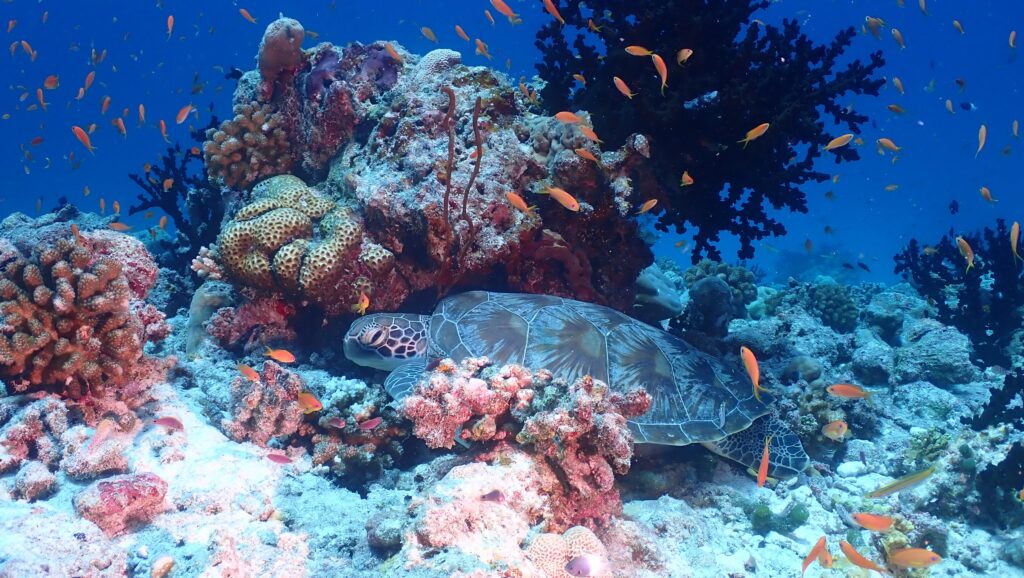
The Best Time to Dive in the Maldives
Seasonal Variations and Conditions: While the Maldives is a year-round diving destination, different times of the year offer unique underwater experiences. The dry season, which extends from January to April, is characterized by clear skies, calm seas, and high visibility underwater, making it an excellent time for general diving. On the other hand, the monsoon season from May to November sees plankton blooms, which attract filter-feeding creatures like manta rays and whale sharks in large numbers, providing a unique spectacle for divers.
Read my article on best time to visit the Maldives
Sustainable Tourism and Diving in the Maldives
The Importance of Responsible Diving:
The Maldives has shown a strong commitment to preserving its natural heritage, with numerous conservation initiatives in place to protect its marine ecosystems. As divers, we are both observers and stewards of this underwater realm. By practicing responsible diving—such as avoiding contact with marine life, not disturbing the coral reefs, and not leaving any waste behind—we can ensure that the beauty of the Maldives is preserved for future generations.
Ocean’s Embrace
Taking the plunge in the Maldives is like stepping into an exquisite symphony composed by Mother Nature herself. The harmonious blend of vibrant marine life, spectacular coral formations, and crystal-clear azure waters creates a diving experience that captivates the senses and imprints on the soul. It’s more than just a dive; it’s an intimate embrace with the ocean—an experience that stays with you long after you’ve left the waters.
Frequently Asked Questions
What is the best dive site for beginners in the Maldives? Banana Reef in North Male Atoll is an excellent spot for beginners. The site boasts calm conditions, a maximum depth of 30 meters, and an array of marine life, including reef fish, sharks, and occasional manta rays. However, always choose a dive site based on your comfort and experience level.
When is the best time to see manta rays and whale sharks in the Maldives? Manta rays can be spotted throughout the year in the Maldives, but their sightings peak between May and November. For whale sharks, South Ari Atoll is a popular spot all year round, with sightings particularly high between February and April.
What are some recommended dive centers in the Maldives? Prodivers Maldives, Euro-Divers Maldives, and Ocean Dimensions are among the top-rated dive centers in the Maldives. However, when choosing a dive center, it’s essential to consider factors like safety measures, equipment quality, and staff expertise. Always read reviews and do thorough research before making a decision.
Is diving in the Maldives safe? Yes, diving in the Maldives is safe, provided you follow safety guidelines, listen to your dive instructor, and dive within your limits. The Maldives has a well-regulated diving industry with high safety standards.
Do I need a certification to dive in the Maldives? Yes, you need at least a basic Open Water Diver certification to dive independently in the Maldives. However, most dive centers offer discovery dives for beginners under the direct supervision of an instructor.
What types of sharks can I see while diving in the Maldives? The Maldives is a haven for sharks. Divers can commonly spot species such as white-tip reef sharks, grey reef sharks, and nurse sharks. Hammerhead sharks can also be spotted in few dive sites.

